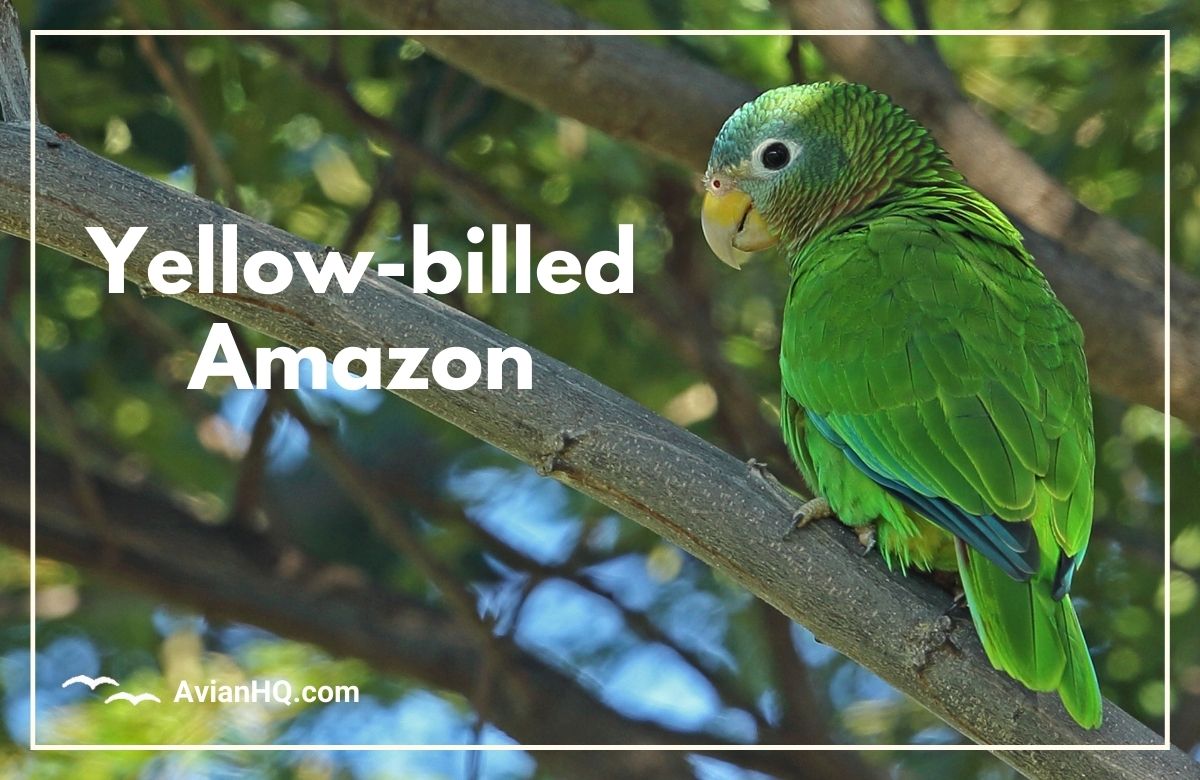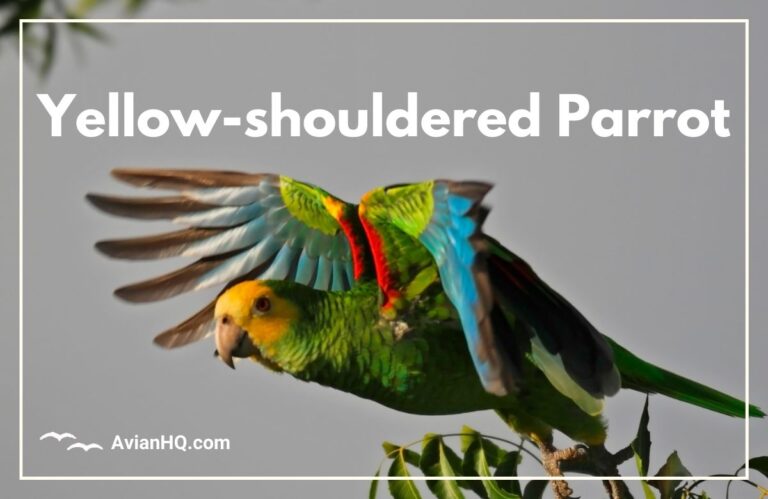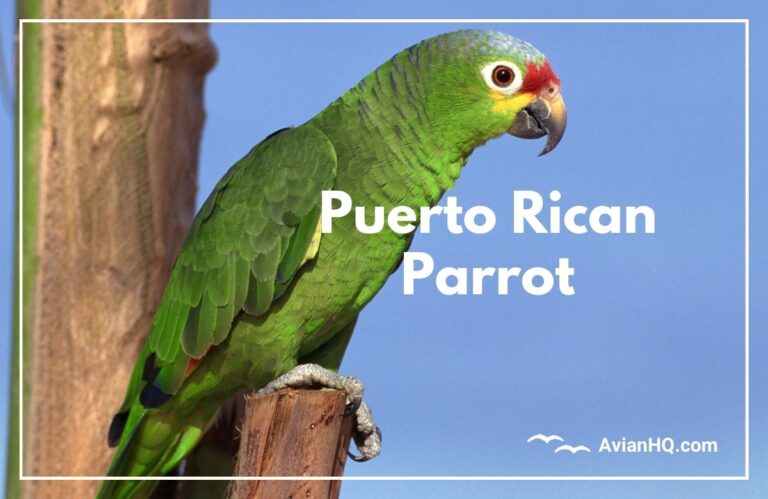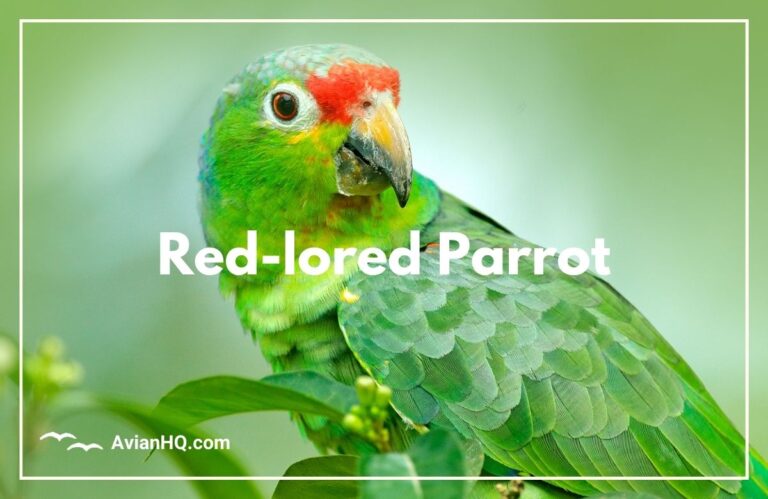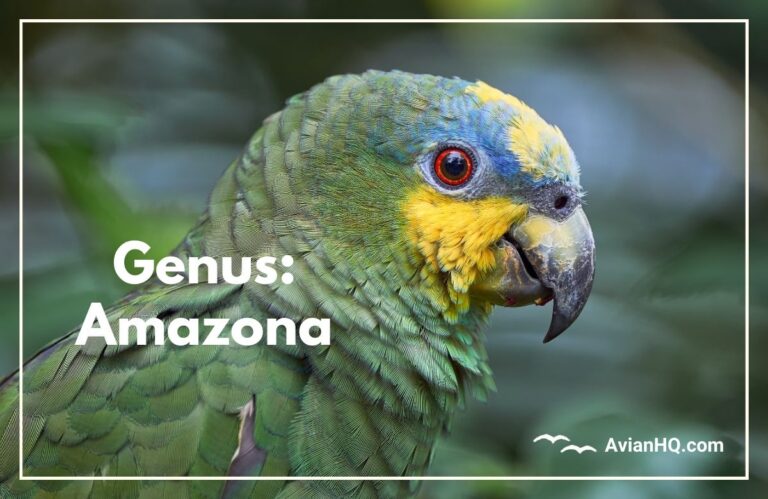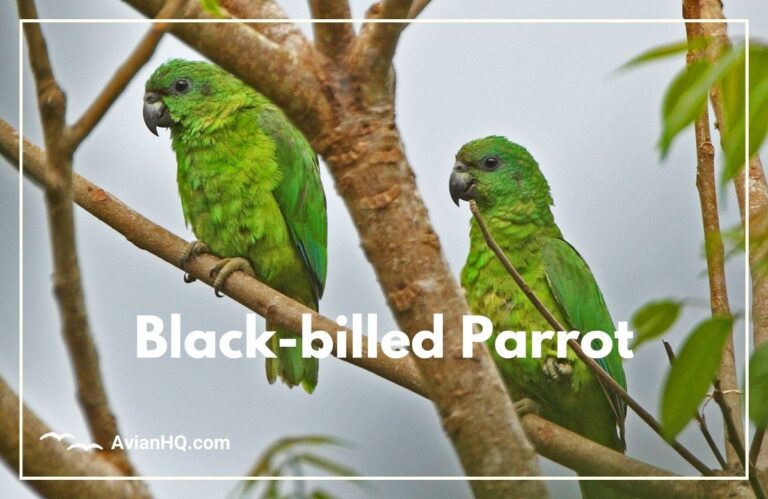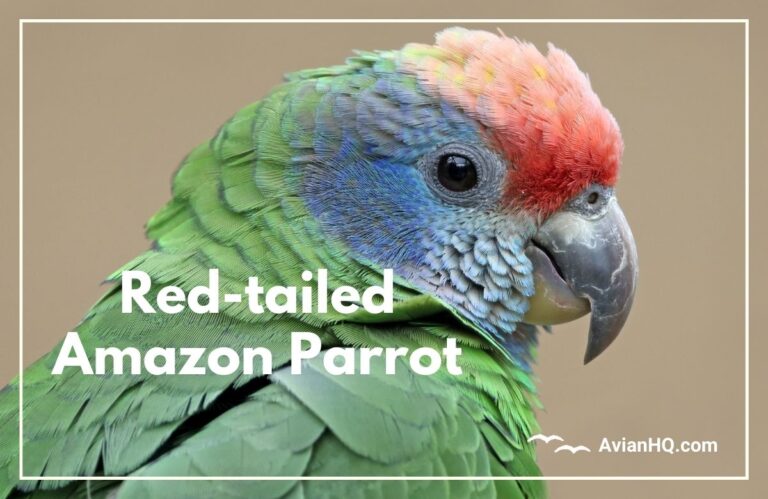Yellow-billed Amazon Parrot (Amazona collaria)
You first catch sight of a flash of green and yellow as the parrot darts among the trees. Upon closer inspection, you see it’s vibrant plumage – emerald feathers on it’s back and wings, contrasted by a bright yellow beak and pale pink throat. This tropical beauty is known as the Yellow-billed Parrot, or Amazona collaria, endemic to the island of Jamaica in the West Indies.
Standing at about 11 inches (28 cm) from head to tail, the Yellow-billed Parrot weighs in at a petite 9 ounces (260 grams). But it’s size belies it’s importance. As Jamaica’s only native parrot, this vulnerable species plays a special role in it’s island ecosystem.
In this article, you’ll learn all about the natural history of the Yellow-billed Parrot – from what it eats to how it breeds to it’s conservation needs. Understanding this rare tropical parrot provides a window into protecting the vibrant biodiversity of Jamaica.
First described over 250 years ago, the Yellow-billed Parrot has captivated people across Jamaica. Valued as a food source and pet, it also faces threats from habitat destruction and trapping. As you’ll see, striking the balance between human interests and preservation remains an ongoing challenge.
Join us as we explore the sights and sounds of the Yellow-billed Parrot, a feathered jewel unique to Jamaica! Along the way, a deeper appreciation of this island nation’s ecological treasures awaits.
History and Taxonomy
Your journey into the world of the Yellow-billed Parrot begins over 250 years ago. In 1758, Swedish naturalist Carl Linnaeus first described the species in the 10th edition of his influential book Systema Naturae. He named it Psittacus collarius, with “Psittacus” indicating it’s parrot family and “collarius” referring to the distinctive collar of pale pink feathers on it’s throat.
Linnaeus drew his initial description from a 1725 book on Jamaican wildlife by Irish explorer Hans Sloane. Sloane vividly noted how Jamaicans baked the parrots into savory pies. So from the earliest records, the Yellow-billed Parrot intertwined with human history on the island.
Today taxonomists classify the Yellow-billed Parrot in it’s own genus, Amazona. The single species A. collaria includes no identified subspecies across it’s Jamaica range. It’s closest relative, the Black-billed Parrot, resides on the island of Hispaniola.
So Linnaeus’ original identification holds firm. No other wild parrot calls Jamaica home. That makes conservation of this endemic species particularly important. As the only surviving Caribbean amazon parrot never introduced by humans, it serves as a natural heritage unique to Jamaica.
Physical Appearance
The Yellow-billed Parrot cuts a vibrant figure in the dappled Jamaican forest light. It measures about 11 inches (28 cm) long from the curve of it’s short tail feathers to the tip of it’s forehead. Wings folded, the parrot stands under 5 inches tall (12 cm), with strong pink legs measuring around 0.6 inches (1.5 cm).
Weighing in at 9 ounces (260 grams), it’s solid heft comes wrapped in a gorgeous emerald package accented with crimson and sapphire. Yellow-tipped feathers stand out sharply on it’s cheeks and throat, complementing it’s signature sunshine-yellow beak. White rings surround it’s dark brown eyes like a natural set of goggles.
Brilliant green hues dominate the feathers on it’s back, wings, forehead and tail. Yet inside those green wings, vivid azure shades create dazzling flashes in flight. The tail itself transitions from emerald green at the coverts to a pale meadow green, with vivid reddish bases visible in perched birds.
While adult males and females appear identical, juveniles sport subtle grey flecking on their beaks. After leaving the nest, young parrots molt quickly to match their parents in spectacular grown-up plumage.
Habitat and Distribution
The Yellow-billed Parrot makes it’s home solely on the island of Jamaica in the Caribbean Sea. An endemic species evolved in isolation, it lives nowhere else in the wild. It’s native range extends across diverse Jamaican ecosystems.
Most numerous in the misty Blue Mountain and John Crow Mountain ranges, Yellow-billed Parrots inhabit rainforest canopies at elevations up to 4,000 feet (1,200 meters). But they also nest in limestone and alluvial woodlands closer to sea level.
The parrot frequents both wet limestone forests dominated by Terminalia trees and drier slopes covered in Cedrela and Swietenia foliage. It flies regularly between isolated fragments of montane rainforest and drier coastal woodlands. Visitors can even spot these adaptable parrots in rural gardens and city parks with sufficient tree cover.
While mainly resident year-round, the parrots may migrate vertically up and down elevation zones. Nests often concentrate in higher inland forests during the March-May breeding season. After rearing chicks, the parrots appear more often at lower, warmer elevations nearer the coast.
So protected woodlands across Jamaica host this colorful island endemic. No introduced populations have established elsewhere, making preservation of Jamaican habitat vital for this species’ continued survival.
Diet and Feeding
The Yellow-billed Parrot forages widely across it’s Jamaican habitat for a diverse, nutritious diet. As an opportunistic generalist, it feeds on a variety of native forest foods supplemented by cultivated fruits and crops.
This adaptable diet likely helps the species persist across a habitat prone to hurricanes and deforestation. Feeding on over 80 different plant species, the Yellow-billed Parrot samples fruits, seeds, blossoms, buds, and vegetation.
Favorite wild foods include the Cecropia figs, which provide small nutritious fruits. Yellow-billed Parrots also relish the oily berries of the Calophyllum antillanum tree and Mountain Guava. Palm fruits and South American almond appear frequently on seasonal menus.
The parrots supplement these wild items with banana, mango, papaya, orange, and other fruits grown on Jamaican farms. Flocks raid cattle pastures for grass seed as well. Such flexible foraging lets Yellow-billed Parrots move across fragmented habitats.
After filling up on food, the parrots gather in noisy communal roosts at dusk. They rest overnight before setting off to feed again the next morning. This daily rhythm of active feeding and communal roosting sustains populations across variable Jamaican forests.
Breeding and Reproduction
The breeding biology of the Yellow-billed Parrot reveals fascinating adaptations to it’s island ecosystem. As cavity nesters, they depend ontree holes excavated by vanished Jamaican woodpeckers. Such limitations concentrate suitable nest sites in older highland rainforests.
When not rearing young, Yellow-billed Parrots roost communally in large flocks from 10 to over 100 birds. But in the March-May breeding season, mated pairs break away to nest solitarily.
Females lay small rounded white eggs in deep tree hollows naturally carved out by fungi and decay. A typical clutch contains 3 eggs ranging around 1.4 inches x 1.1 inches (36 mm x 29 mm). Both sexes incubate the eggs for 24-26 days before hatching.
The adults brooding tiny blind nestlings must protect their tree cavity from snakes, rats, and tropical storms. Nestlings grow quickly on regurgitated fruits, seeds, and nutritious crop milk. By 8 weeks, awkward fledglings emerge from hollow trees now able to fly weakly alongside their parents.
So survival of each new generation relies on persistence of old tree cavities across shrinking Jamaican habitat. Conservation efforts which preserve mature rainforest trees boost prospects for successful Yellow-billed Parrot nesting.
Behavior and Ecology
The daily life of Yellow-billed Parrots revolves around foraging and roosting behaviors tuned to Jamaica’s seasonal forests. Outside the March-May breeding season, they gather in large communal roosts that may mix with other parrot species.
Roost composition shifts across the year, ranging from small family groups of 5-10 after breeding to large congregations over 100 birds in peak winter. Party size also varies by location, with small bands in fragmented woodlots and bigger flocks in protected forests.
During daylight hours, roosts discharge clouds of parrots out to feed. Foraging groups usually contain less than 15 birds. More solitary pairs forage amid their hidden breeding trees later in spring.
Flocks employ sentinel parrots perched prominently as lookouts warning of predators like hawks or humans. Alert birds emit loud squawks sending the flock into cover. Such anti-predator vigilance lets flocks safely exploit seasonal bonanzas like flowering or fruiting trees.
Throughout the year, Yellow-billed Parrots socialize and forage alongside Jamaican conures, orange-winged parrots, and Black-billed Parrots from Hispaniola. Their loud contact calls echo daily across Jamaican forests alongside other native birds. Protecting diminishing wild habitats preserves these vibrant island communities.
Conservation Status
Classified as Vulnerable by the International Union for Conservation of Nature (IUCN), the Yellow-billed Parrot faces an uncertain future across it’s Jamaican stronghold. Experts estimate only 10,000-20,000 breeding birds remain in the wild.
This restricted-range species suffers from extensive habitat loss as agriculture and bauxite mining replace native forest. Over 300 years, Jamaica’s tree cover shrank from over 75% to less than 10% today. Much of the remaining fragmentation lies outside protected areas.
The Yellow-billed Parrot also falls frequent victim to illegal poaching for the pet trade as well as local consumption. Uncontrolled capture of nestlings removes up to 14% of juveniles annually. Trappers take advantage of the species’ tendency to nest in aggregations, targeting whole roosts.
In response, Jamaica banned export and capture of the Yellow-billed Parrot in the 1990s. But illicit taking continues, often facilitated by fraudulent capture permits. Improved enforcement of CITES trade restrictions could limit this threat.
While still fairly common in parts of Jamaica, the parrot’s restricted endemic range and fragmented habitat render it vulnerable to extinction. Preserving mature trees across montane forests and agricultural zones offers the best hope for the survival of this island jewel.
Cultural Significance
The flashy green and gold plumage of the Yellow-billed Parrot etched itself into Jamaican culture for centuries. One of just two parrot species breeding on the island, it’s mischievous flocks and raucous cries animate folk tales and place names across Jamaica.
As the Irish explorer Hans Sloane first reported in 1687, Jamaicans relished baked Yellow-billed Parrot as a tasty source of meat. Contemporary hunters still legally trap the species for food in small numbers.
But the parrot’s vibrant colors and vocal nature also made it a desirable pet for households across Jamaica. Demand for these smart companion parrots unfortunately accelerated illegal poaching from the 1990s onward.
Most Jamaicans still admire the beauty and spirit of the island’s “green parrot” even if they don’t condone poaching. Images of Yellow-billed Parrots now grace the jamaican 20 dollar bill as symbols of national pride. Helping local communities practice sustainable harvest while conserving habitat remains an ongoing challenge.
The name “cotezi” also endures as a popular Jamaican boy’s name celebrating the parrot’s bright plumage. So the yellow-billed parrot persists as a cultural treasure as well as biological heritage for Jamaica. Preserving this species for the future intertwines with maintaining flourishing human communities across the island.
Conclusion
The rare beauty of the Yellow-billed Parrot symbolizes Jamaica’s fragile ecological wonders. As an island endemic species, it’s persistence depends upon the preservation of native forest habitat across a biodiverse but threatened Caribbean island.
Glimpsing vibrant flocks feeding on mountain fruits and nesting in mature tree hollows offers a window back into Jamaica’s rich natural heritage. Yet saving these yellow-billed jewels requires more than admiring their bright feathers. It demands protecting significant swaths of montane rainforest and limestone woodlands that sustain them.
Going forward, balancing ecological preservation with economic development remains key to conserving Jamaica’s avian treasures. Expanding protected areas, enforcing trade bans, and building local pride in the Yellow-billed Parrot can ensure this unique species endures for future generations.
So while human pressures continue to fracture the parrot’s island home, well-conceived conservation initiatives offer hope. The melodious cries of Yellow-billed Parrots still echo through Jamaica’s forests after 300 years. With informed environmental stewardship, we can ensure those wild island voices carry on.

